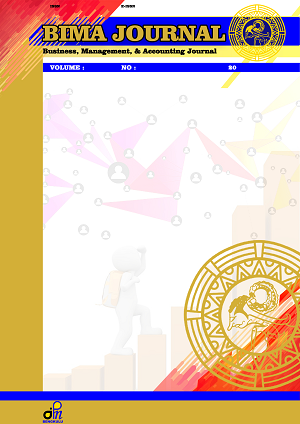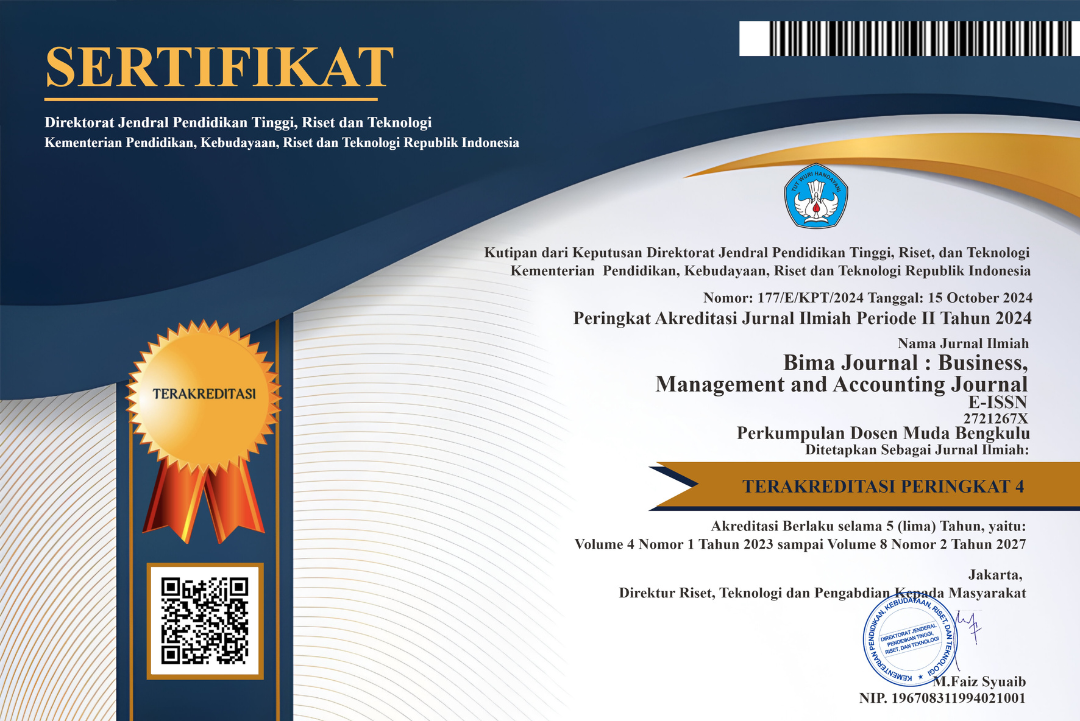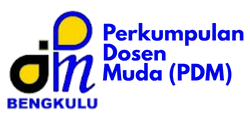The Effect of Discipline and Motivation on Employee Productivity at PT. Kereta Api Indonesia (Persero) Sintelis Divre III Palembang
DOI:
https://doi.org/10.37638/bima.4.2.145-152Keywords:
Discipline, Motivation, Employee ProductivityAbstract
This study aims to determine the effect of discipline and motivation on employee productivity at PT. Kereta Api Indonesia (Persero) Sintelis Divre III Palembang. The method used is descriptive quantitative. Questionnaire is a data collection technique carried out by researchers to respondents who aim to obtain data or information related to the research topic. This study used a closed questionnaire form to make it easier for respondents to answer questions with the available choices. 4. Based on the test results of the coefficient of determination (Adjusted R Square) it is obtained at 0.619. This shows that work motivation and work discipline variables affect work productivity variables by 61.9%. While the remaining 38.1% is explained by other variables not examined in this study.
References
Burhannudin, Keuangan Yusuf. Syariah. 2015. Rajawali Manajemen Pers. Sumber Daya Manusia di Lembaga Surabaya.
Eko, Widodo Pustaka Suparno. Pelajar. Yogyakarta. 2015. Manajemen Pengembangan Sumber Daya. Manusia.
Ghozali, (7 H. ed.). I. (2013). Badan Aplikasi Analisis Multivariate Dengan Program IBM SPSS 21 Penerbit Universitas Diponegoro. Semarang.
Hasibuan, Bumi Malayu Aksara. SP. Jakarta. 2014. Manajemen Sumber Daya Manusia, Cetakan Ke-14.
Manajemen Sumber Daya Manusia. Bumi Aksara. Jakarta.
Manajemen Sumber Daya Manusia. Bumi Aksara. Jakarta.
Husein Pers. Umar. 2019. Metode Penelitian Untuk Skripsi dan Tesis Bisnis. Rajawali Jalkarta.
Hindriari, R. (2018). Pengaruh Disiplin Kerja Terhadap Produktivitas Kerja Karyawan Pada PT. Telkom Aksess Legok. Jurnal Semarak, 1(1), 92-107. (http://openjournal.unpam.ac.id, diakses pada l0 Juni 2022).
Kasmir. 2017. Manajemen Sumber Daya Mansuia Teori dan Praktik. PT. Raja Grafindo Persada. Depok.
Laksmiari, N. P. P. (2019). Pengaruh Motivasi Kerja Terhadap Produktivitas Kerja aryawan pada Perusahaan Teh Bunga Teratai di Desa Patemon Kecamatan Serrit. Jurnal Pendidikan Ekonomi Undiksha, 11(1), 54-63. (https://ejournal.undiksha.ac.id, diakses pada 10 Juni 2022).
Mangkunegara, AA. Anwar Prabu. 2015. Manajemen Sumber Daya Mausia, Cetakan kedua belas. Remaja Rosdakarya. Bandung.
Ridwan MBA. 2015. Buku Dasar Statistik. CV. Alfabeta. Bandung.
Simamora, Henry. (2006). Manajemen Sumber Daya Mamusia, Edisi 2. STIE. YKPN. Yogyakarta.
Sugiyono. 2015. Metode Penelitian, Cetakan Keempat. CV. Alfabeta. Bandung.
Suhariadi, Fendy. 2013. Manajemen Sumber Daya Manusia : Dalam Pendekatan Teoritis-Praktis. Airlangga University Press. Surabaya.
Sumanto. 2014. Teori dan Aplikasi MetodePenelitian. CAPS. Yogyakarta.
Sutrisno, Edy. 2016.Manajemen Sumber Daya Manusia. Cetakan ke-1.Kencana. Jakarta.
Wibowo. 2014. Manajemen Kinerja, Edisi ke-4. PT. Raja Grafindo Persada. Jakarta.
Manajemen Kinerja. Edisi Pertama. Prenamedia Group. Jakarta.
Yani, M. 2012. Manajemen Sumber Daya Manusia. Mitra Wacana Media. Jakarta.
Downloads
Published
Issue
Section
License
An author who publishes in the BIMA JOURNAL: Business, Management, and Accounting Journal agrees to the following terms:
Author retains the copyright and grants the journal the right of first publication of the work simultaneously licensed under the Creative Commons Attribution-ShareAlike 4.0 License that allows others to share the work with an acknowledgement of the work's authorship and initial publication in this journal
Submission of a manuscript implies that the submitted work has not been published before (except as part of a thesis or report, or abstract); that it is not under consideration for publication elsewhere; that its publication has been approved by all co-authors. If and when the manuscript is accepted for publication, the author(s) still hold the copyright and retain publishing rights without restrictions. For the new invention, authors are suggested to manage its patent before published. The license type is CC-BY-SA 4.0.
BIMA JOURNAL: Business, Management and Accounting is licensed under a Creative Commons Attribution-ShareAlike 4.0 International License.
You are free to:
Share — copy and redistribute the material in any medium or format
Adapt — remix, transform, and build upon the material
for any purpose, even commercially.
The licensor cannot revoke these freedoms as long as you follow the license terms.
Under the following terms:
Attribution — You must give appropriate credit, provide a link to the license, and indicate if changes were made. You may do so in any reasonable manner, but not in any way that suggests the licensor endorses you or your use.
ShareAlike — If you remix, transform, or build upon the material, you must distribute your contributions under the same license as the original.
- No additional restrictions — You may not apply legal terms or technological measures that legally restrict others from doing anything the license permits.
Notices:
- You do not have to comply with the license for elements of the material in the public domain or where your use is permitted by an applicable exception or limitation.
- No warranties are given. The license may not give you all of the permissions necessary for your intended use. For example, other rights such as publicity, privacy, or moral rights may limit how you use the material.





















